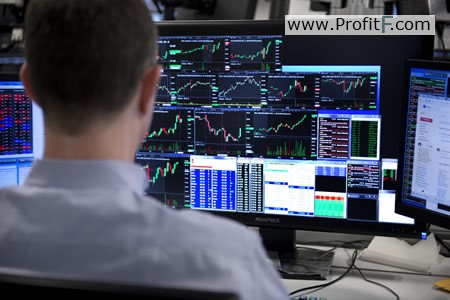TABLE OF CONTENTS:
Article by Philipp Pfitzenmaier from “TradeWithPrecision“
When you first start trading forex, the inconvenient truth is that many people will question why you are doing such a risky thing and try to dissuade you from it. This is because most people are investors and they think only of holding positions in asset classes such as equities and bonds. Very few people will think that forex is a legitimate way of making a living because it has too often been associated with speculation and high risk, high return type transactions. But this cannot be further from the true nature of forex trading. Here’s how to explain it to your investor friends and prove you are not taking unnecessary risks.

Forex prices are always quoted in pairs, meaning they are quoted as one currency against the other. For example, if GBPUSD is quoted as 1.3408 that means that 1 GBP will fetch 1.3408 USD at current rates. The quote is an indication of the relative strength of the UK economy against the American one. Therefore, if you expect the UK economy to outperform the US, you would anticipate an increase in the rate of the GBPUSD. This shows the relative increase in the strength of the pound against the dollar. If you hold the opposite view, then you would expect the rate to decrease as the dollar climbs against the pound. It’s that simple.
We are living in an increasingly connected world where international travel is now the norm and not a luxury. As such, it is common to have an understanding of how currencies perform relative to each other. When taking the road less travelled, we get the chance to observe the everyday lives of people in their countries. We get to speak to them, to enquire about the costs of living and whether it is common for locals to experience financial difficulties. This is seeing firsthand the local economic reality. Our understanding of economic realities determines how we perceive the relative worth of currencies and therefore, in a way, also informs our forex trade decisions.
Another reason why forex is not as risky as it is made out to be is because there is incredible trade volume in the market. In fact, forex markets are the most actively traded market in the world with more than US$4 trillion changing hands each day. When a market is active, spreads are lower and orders are more likely to be filled than if you were in a sparsely traded market like specialist equities or alternative investment indices for example. The risk in forex is therefore arguably lower as spread cost is lower and you do not have to wait as long to break-even.
Forex trading is very different to investing in that it does not rely so much on fundamental analysis. Instead of relying on and responding to releases of lagging market data, forex traders use technical analysis to analyse potential opportunities and time their trade entries. It is not difficult to spot trending forex pairs when looking at the charts. For example, an uptrend is represented by a chart making higher highs and higher lows over a period of time. Combining what is seen on the charts with technical analysis allows you to make calculated decisions about risk and reward. Setting a stop loss defines your risk upfront, and you can set your profit target in correspondence with your maximum tolerable loss.
To trade forex is to adopt a global view in your trading. Your understanding of the world is deepened in a way that you can’t get from investing only in equities and bonds. The more educated a trader is, the better his or her chances of survival in the long run regardless of the market they are trading in.
See our article ” 4 STEPS: How to Start Trading Forex “
Add your review